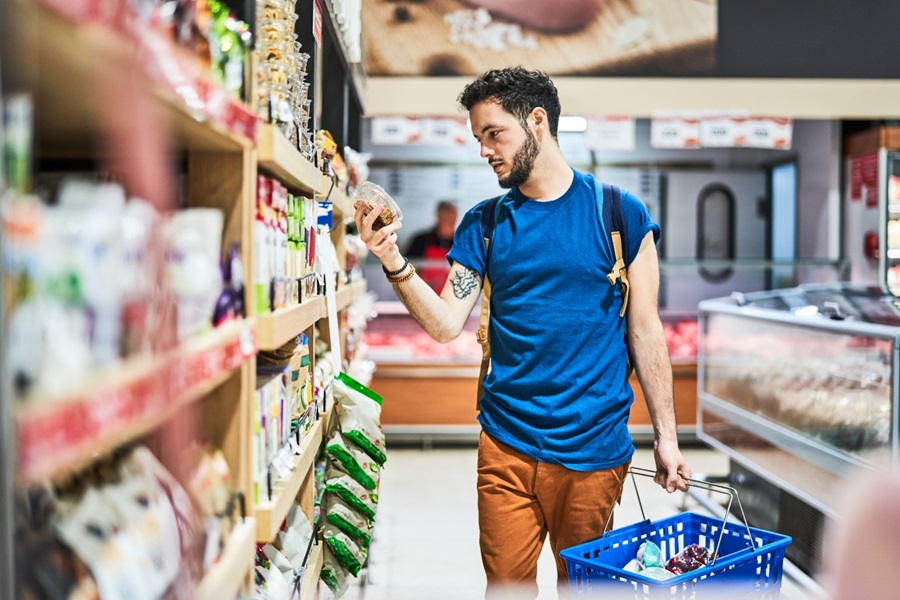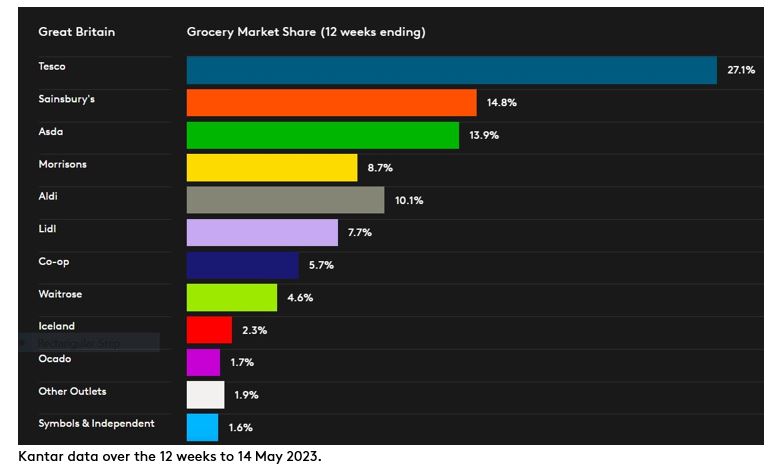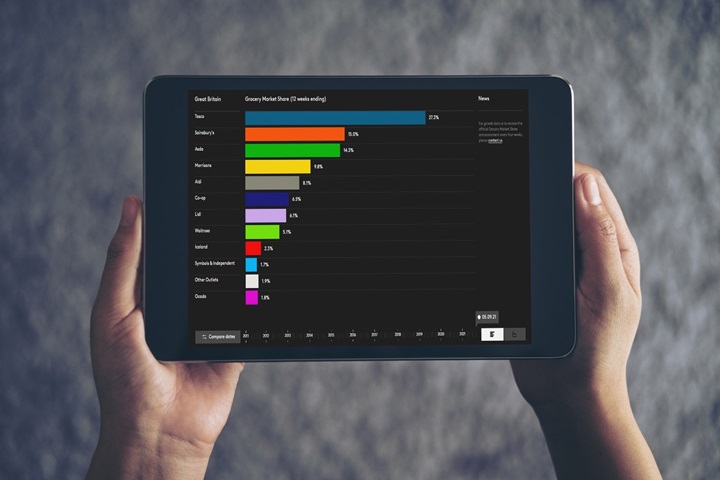Like-for-like grocery price inflation has fallen for the second month in a row and now sits at 17.2% for the four weeks to 14 May 2023, according to our latest data. Take-home grocery sales rose by 10.8% over the month in comparison with the same period last year.
The drop in grocery price inflation, which is down by 0.1 percentage points on last month’s figure, is without doubt welcome news for shoppers but it is still incredibly high – 17.2% is the third fastest rate of grocery inflation we’ve seen since 2008. This could add an extra £833 to the average household’s annual grocery bill if consumers don’t shop in different ways.
Of course, shoppers are savvy and they’re skirting higher prices by choosing more own-label goods. These lines grew by 15.2% this month, almost double that of branded products which rose by 8.3%. However, the gap between own lines and brands is narrowing in most stores, helped in some cases by loyalty discounts. The recently launched Nectar prices scheme boosted sales of brands bought on deal in Sainsbury’s, causing them to jump by more than a quarter this period.
The supermarkets are fighting to offer value to shoppers. In the fierce contest for market share, eyes have been on the dairy aisle in particular, where the average cost of four pints of milk has come down by 8 pence since last month. Prices are still much higher than they were 12 months ago, at £1.60 currently versus £1.30 last year, but retailers know just how important it is to offer even small savings on staple products like milk to get customers through the door.
Crowning glory
Despite price pressures, people took the opportunity to make the most of the additional bank holiday this month with celebrations for the King’s coronation. Grocery sales soared by 16% during the week of the coronation, adding up to an extra £218 million passing through the tills. Shoppers filled up their glasses, with sparkling and still wine especially popular. Sales of these products climbed by 129% and 33% respectively, driven by demand not price rises with wine inflation only at 1%.
The nation showed its enthusiasm for a festive dish with the official Coronation Quiche proving to be a big hit. Lots of people seem to have got into the spirit of the royal occasion, grabbing their chance to have a go at the official coronation recipe. Sales of ingredients like chilled pastry surged by 89%, while fresh cream sales jumped by 80% and frozen broad beans by 57%. We'll have to wait and see whether it becomes as much loved as its 1953 counterpart Coronation Chicken and cements its place on the British picnic and garden party menu.
Waitrose benefited from a substantial uplift in the week of the coronation, with sales up by 4.8% over the twelve weeks, the highest rate of growth the retailer has achieved since April 2021. Its market share is now 4.6%. Meanwhile, Aldi was the fastest growing grocer this month, with sales up by 24.0%. Lidl’s sales increased by 23.2%. The two discounters now account for 17.8% of the market, with Aldi’s share at 10.1% and Lidl at 7.7%.
Asda joins discounters in winning share
Asda grew by 10.6% and its market share now stands at 13.9%, a rise of 0.1 percentage points when compared to the same 12 weeks last year. Sales were boosted by its Just Essentials range. Launched 12 months ago, nearly two in five Asda baskets contained at least one of these value items this May.
Morrisons took an 8.7% share this period. Morrisons marked its third consecutive period of sales growth this month, although the increase was more muted versus others at 0.6%. The grocer will be hoping the relaunch of its ‘More Reasons to Shop’ strapline will help it to keep up the positive momentum.
Sales increased by 8.9% for Britain’s largest supermarket, Tesco, with growth across its convenience stores, large format supermarket and online channels. It now holds 27.1% of the market. Sainsbury’s sales rose by 10.5% and it held market share steady at 14.8%. Convenience specialist Co-op nudged up its sales by 2.9%, Iceland by 9.1% and online only Ocado by 5.6%.



